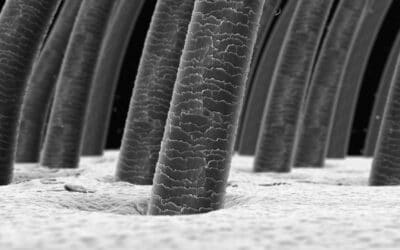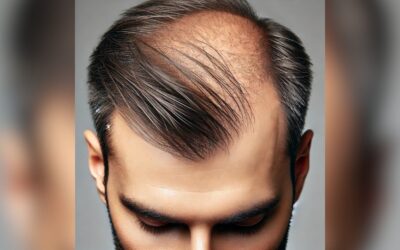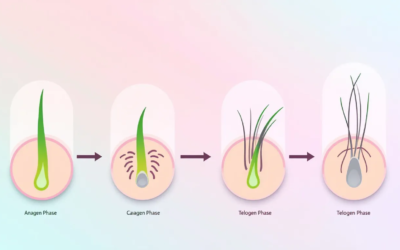What is FUE?
Are you considering a hair restoration procedure but wondering what is FUE and why it’s the hottest hair restoration method? Follicular Unit Extraction is an increasingly popular choice for those looking to restore their lost or thinning hair. FUE is minimally invasive, highly effective, and can be used on both men and women. Additionally, FUE works on all types of hair.
In this blog post, we’ll explore the history of FUE, its benefits, who it works best for, and what the entire process entails from start to finish. We’ll also provide some valuable tips on how to properly care for your scalp after having an FUE transplant so that you get maximum results with minimal side effects. So let’s dive in and figure out what is FUE hair restoration.
Table of Contents:
- What is FUE?
- Benefits of FUE
- Who is a Good Candidate for FUE?
- Understanding the FUE Procedure
- FUE Aftercare
- FAQs in Relation to What is Fue?
- Conclusion
What is FUE, the Follicular Unit Transplant?
Follicular Unit Extraction (FUE) is a minimally invasive hair transplant procedure that involves the extraction of individual follicular units from the donor area and their placement into the recipient area. This technique allows for natural-looking results with minimal scarring and downtime.
The FUE process begins with an initial consultation to determine if you are a good candidate for this type of procedure. During this appointment, your hair restoration doctor touches on 3 aspects of the process. He asses your scalp. Next, he discusses your medical history. Finally, he reviews any medications or supplements you may be taking. Your doctor will also explain what to expect during the surgery as well as provide instructions on how to prepare for it.
Once you have been approved for FUE, your surgeon will begin by harvesting healthy follicles from areas where there is thicker growth such as at the back or sides of your head. The harvested follicles are then carefully placed in tiny incisions made in the balding areas of your scalp using special instruments designed specifically for this purpose.
These grafts are then secured in place with sutures or staples so they can heal properly over time without being disturbed by everyday activities like brushing or combing hair.
After the Procedure
During the healing process, patients may experience some swelling and redness which should subside within 1-2 weeks after surgery. It is important to avoid scratching or disturbing these areas during recovery in order to achieve optimal results.
FUE is considered a minimally invasive hair transplant technique. In other words, most patients heal quickly. Additionally, hair res natural-looking results with minimal downtime. With its many advantages, FUE can provide an effective and permanent solution for those seeking to restore their hairline or fill in thinning areas. Let’s now take a look at the benefits of FUE hair restoration.
The Benefits of FUE
FUE, or follicular unit extraction, is a minimally invasive hair transplant technique that has become increasingly popular in recent years. Unlike traditional methods such as strip harvesting and scalp reduction surgery, FUE does not involve any incisions or stitches. Instead, individual follicles are extracted from the donor area of the scalp using a specialized tool and then transplanted into areas of baldness or thinning hair.
Minimal Scarring
One of the main benefits of FUE is its minimal scarring. Since no incisions are made during the procedure, there will be no visible linear scars on your head after healing is complete. This makes it an ideal choice for those who want to wear their hair short without having to worry about unsightly scars being visible at all times. Additionally, since only small punches are used to extract each follicle from the donor area, recovery time is typically much faster than with other types of procedures—in some cases just a few days.
Patient Versatility
Another benefit of FUE is its versatility; it can be used to treat both male and female pattern baldness as well as other types of hair loss such as alopecia areata (patchy bald spots) and traction alopecia (hair loss caused by tight hairstyles). It can also be used in combination with other techniques such as PRP therapy (platelet-rich plasma injections) for even better results. Furthermore, since individual hairs are transplanted rather than strips or plugs like in traditional methods, results tend to look more natural with less risk of “pluggy” looking patches forming on your head over time.
Greater Control
Finally, FUE offers greater control over where grafts are placed compared to older techniques which often resulted in unnatural-looking hairlines due to lack of precision when placing grafts close together along the front edge of the scalp. With FUE you have more control over exactly where each graft should go so you can achieve a softer transition between existing hairs and newly transplanted ones for a more natural appearance overall.
FUE is a great option for those looking to permanently restore their hair and enjoy the benefits of natural-looking results with minimal scarring. Now let’s take a look at who makes a good candidate for this procedure.
Who is a Good Candidate for FUE?
Today, doctors consider FUE to be one of the most advanced methods for restoring lost hair. Those who are in good overall health and have realistic expectations about the outcome of their procedure are typically good candidates for FUE.
It is important to note that this procedure may not be suitable for those with severe hair loss or advanced stages of balding. The best way to determine if you are a good candidate for FUE is by consulting with an experienced surgeon who can evaluate your condition and provide advice on whether or not it would be beneficial for you.
is FUE Right For You?
In order to qualify as a candidate, individuals must have enough healthy donor hairs available in order to successfully complete the transplant process. This means having sufficient amounts of dense, healthy hairs at both sides and back of your scalp which will serve as “donor” sites where new grafts will be taken from during surgery. If there isn’t enough donor material available then other options such as scalp micropigmentation may need to be explored instead.
The ideal candidate should also be aware of all the components involved in undergoing FUE treatment, including potential risks associated with any surgical procedures and possible side effects such as swelling, redness, and scarring. It is important to keep in mind that results may vary depending on various factors like age, lifestyle habits, and medical history; therefore it is essential to set realistic expectations prior to undergoing this kind of procedure.
Your Health Matters
Finally, it is important that candidates maintain excellent physical health prior to going through FUE treatments since any underlying conditions could potentially complicate things further down the line. For instance, people suffering from diabetes or heart disease might find it difficult to heal properly after surgery due to inadequate blood circulation around affected areas. Therefore, these types of individuals would likely benefit more from non-invasive solutions such as topical creams rather than opting for something more invasive like FUE transplants.
If you are looking for a permanent hair loss solution and think FUE might be the right choice for you, it is important to understand what this procedure entails in order to make an informed decision. Let’s take a look at the details of the FUE procedure so that you can decide if it is right for you.
Understanding the FUE Procedure
During the FUE procedure, a specialized tool called a punch grafting device is used to extract individual follicular units from the donor area of the scalp. These grafts are then carefully placed into tiny incisions made in the recipient area of the scalp to create a natural-looking result.
The size and shape of each follicle will determine how many grafts can be extracted during an FUE session. Generally speaking, larger and rounder grafts yield more hairs per graft than smaller and thinner ones do. This means that patients with thicker hair may require fewer sessions than those with finer strands in order to achieve their desired results.
The placement of these follicles is key for achieving natural-looking results as well as ensuring optimal growth rates for each patient’s new hairs. The surgeon must take into account factors such as existing hair density and directionality when deciding where to place each individual follicle so that it blends seamlessly with surrounding hairs while also providing maximum coverage throughout the treatment area.
The Importance of Aftercare
Aftercare following an FUE procedure is essential for a successful recovery and long-term satisfaction with your results. It’s important to keep your head elevated at all times during this period in order to reduce swelling around the treatment site; cold compresses can also help alleviate any discomfort you may experience after surgery by reducing inflammation in this region. Additionally, you should avoid any strenuous activities or contact sports until cleared by your doctor; typically, full activity can resume within two weeks post-procedure if no complications arise during recovery time
It is important not only to follow all instructions provided by your physician but also to maintain regular follow-up appointments throughout your healing process so that any potential issues can be addressed quickly before they become more serious problems down the line. Additionally, attending scheduled checkups allows us to monitor progress over time which helps ensure optimal outcomes from our treatments.
By understanding the FUE procedure, you can be well-informed and prepared for the next steps of your hair restoration journey. Now let’s look at how to properly care for your scalp post-procedure in order to ensure a successful outcome.
FUE Aftercare
FUE Aftercare is an important part of the hair transplant process. Following your doctor’s instructions regarding aftercare will help ensure optimal results and minimize any potential complications or side effects. Here are some tips to follow for FUE aftercare:
Avoid Strenuous Activities:
It is important to avoid strenuous activities, such as running, lifting weights, swimming, and other physical activities that may cause trauma to the scalp until it has fully healed. This can take up to two weeks or more depending on how quickly you heal.
Keep Scalp Clean & Dry:
Keeping your scalp clean and dry is essential for proper healing following an FUE procedure. You should gently wash your scalp with a mild shampoo every day but be sure not to scrub too hard or use any harsh products that could irritate the area. Additionally, you should pat your scalp dry instead of rubbing it with a towel in order to prevent irritation or infection.
Avoid Direct Sun Exposure:
Direct sun exposure cause damage and discoloration of newly transplanted follicles. Therefore, sun is best avoided until full healing has occurred which usually takes around two weeks post-procedure. If you must go out in direct sunlight during this time period, make sure you wear a hat or scarf over the treated area. This protects it from UV rays and keep it cool while outdoors.
Take Medication As Prescribed:
Your doctor may prescribe antibiotics or anti-inflammatory medications following surgery. These reduce swelling and pain at the site of treatment. They also prevent infection from occurring during recovery time. Make sure you take these medications exactly as prescribed by your doctor in order for them to be effective at reducing symptoms associated with FUE procedures. These include redness, itching, tenderness, etc.
It is important that patients attend all follow-up appointments scheduled by their doctors. They monitor progress throughout recovery time and address any issues if necessary before they become serious problems down the line. During these appointments, doctors also provide additional advice on how best to care for yourself during recovery time. This includes what type of diet benefits healing most effectively.
FAQs in Relation to What is Fue?
What is the meaning of FUE?
FUE stands for Follicular Unit Extraction, which is a hair transplant procedure used to restore hair growth. It involves the extraction of individual follicles from the donor area and their placement into balding or thinning areas. This method is minimally invasive, leaving no linear scarring and allowing for quicker healing times than other methods. The end result is natural-looking results with minimal downtime. This makes FUE an ideal choice for those seeking permanent solutions to hair loss.
Does FUE really work?
Yes, FUE (Follicular Unit Extraction) hair transplants are a highly effective and permanent solution for those suffering from hair loss. The procedure involves extracting individual follicles of healthy donor hair from the back or sides of the scalp. The next step involves transplanting them to areas where baldness has occurred.
This method is minimally invasive, with no linear scarring and minimal downtime after surgery. Patients see considerable results within 6-12 months post-surgery, with full results visible after 12-18 months. With proper care, these results can last a lifetime.
How long does FUE hair last?
FUE hair transplants are a permanent solution for hair loss, with results lasting a lifetime. The individual follicles extracted during the procedure are genetically resistant to balding and will continue to grow naturally after transplantation. As long as the patient follows post-procedure instructions, they can expect their FUE hair transplant to last for years. Some patients may require additional maintenance or treatments depending on the severity of the hairloss.
Is FUE hair transplant permanent?
Yes, FUE hair transplants are permanent. The procedure involves taking individual follicles from the donor area and implanting them into the recipient area. This process is highly successful in restoring natural-looking hair growth that lasts for many years with proper care and maintenance. The results of an FUE transplant can last a lifetime if cared for properly.
Conclusion
Now you understand what is FUE hair restoration. FUE is a great hair restoration option for those looking to permanently restore their hair. The procedure has come a long way since its inception and can provide amazing results with minimal downtime. FUE offers an alternative to traditional hair transplants. As a result, individuals achieve natural-looking results without scarring or linear incisions.
With proper care after the procedure, patients enjoy lasting results and feel confident in their appearance again. Whether you’re experiencing thinning or balding due to genetics or other factors, FUE may be the right choice for you.
Best Hair Transplant – YOUR HAIR RESTORATION SOLUTION
Best Hair Transplant
1970 S. Prospect Ave., Suite 2
Redondo Beach, CA 90277
(213) 403-0455
https://www.google.com/maps?cid=9280610872186794918










